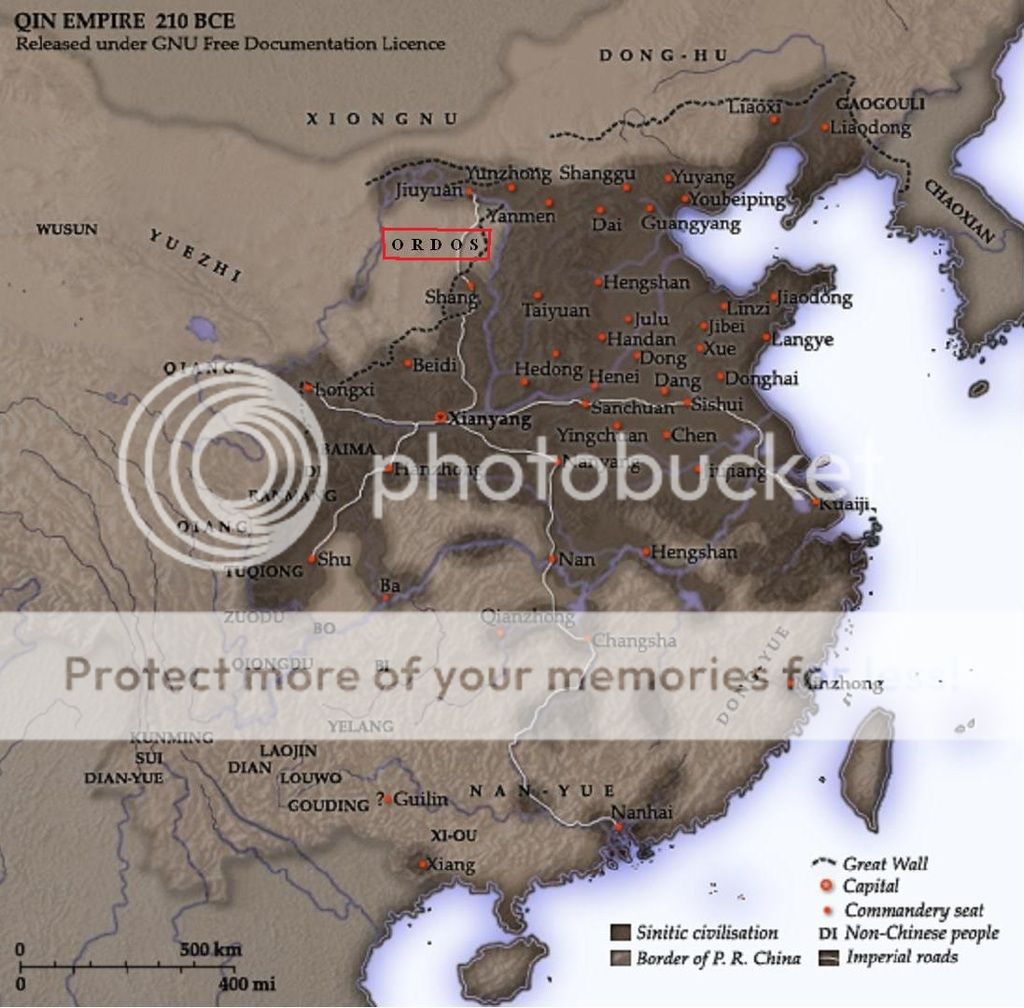The Yuezhi may have been an Europoid people, as indicated by the portraits of their kings on the coins they struck following their exodus to Transoxiana (2nd–1st century BCE), portraits from statues in Khalchayan, Bactria in the 1st century BCE, some old place names in Gansu explainable in Tocharian languages, and especially the coins they struck in India as Kushans (1st–3rd century CE). Ancient Chinese sources do describe the existence of "white people with long hair" (the Bai people of the Shan Hai Jing) beyond their northwestern border.
According to one theory, the Yuezhi were connected to a large migration of Indo-European-speaking peoples from eastern Central Asia in the Bronze Age. These were possibly ethnic Tocharian speakers and connected to the Afanasevo culture. Very well preserved Tarim mummies from the 18th century bc to the first centuries bc with Europoid features (light hair and eyes) and dominated by Haplogroup R1a1a (Y-DNA) have been found in the Tarim Basin. One mummy today displayed at the Ürümqi Museum and dated from the 3rd century BCE, found at the ancient oasis on the Silk Road, Niya, has been connected to the Yuezhi. Evidence of the Indo-European Tocharian languages also has been found in the same geographical area, Although the first known epigraphic evidence dates to the 6th century CE, the degree of differentiation between Tocharian A and Tocharian B and the absence of Tocharian language remains beyond that area suggest that a common Tocharian language existed in the same area of Yuezhi settlement during the second half of the 1st millennium BCE.
Esther Jacobson emphasizes that "the Yuezhi/Kushans may properly be considered to have belonged to the larger Scytho-Siberian culture." The nomadic people, probably Scythians, of the Ordos culture of the Ordos Plateau, who lived in northern China, east of the Yuezhi, are another of a later similar migration. According to some scholars the Yuezhi might themselves have been Scythians. The Yuezhi (Rouzhi) are associated by some scholars with the Ordos culture. Also, the Europoid mummies of Pazyryk, which were probably Scythian in origin, were found around 1,500 kilometers northwest of the Yuezhi and date to around the 3rd century BCE. The Pazyryk burials coincide with the apex of Yuezhi power, and has been connected to them by some scholars.
